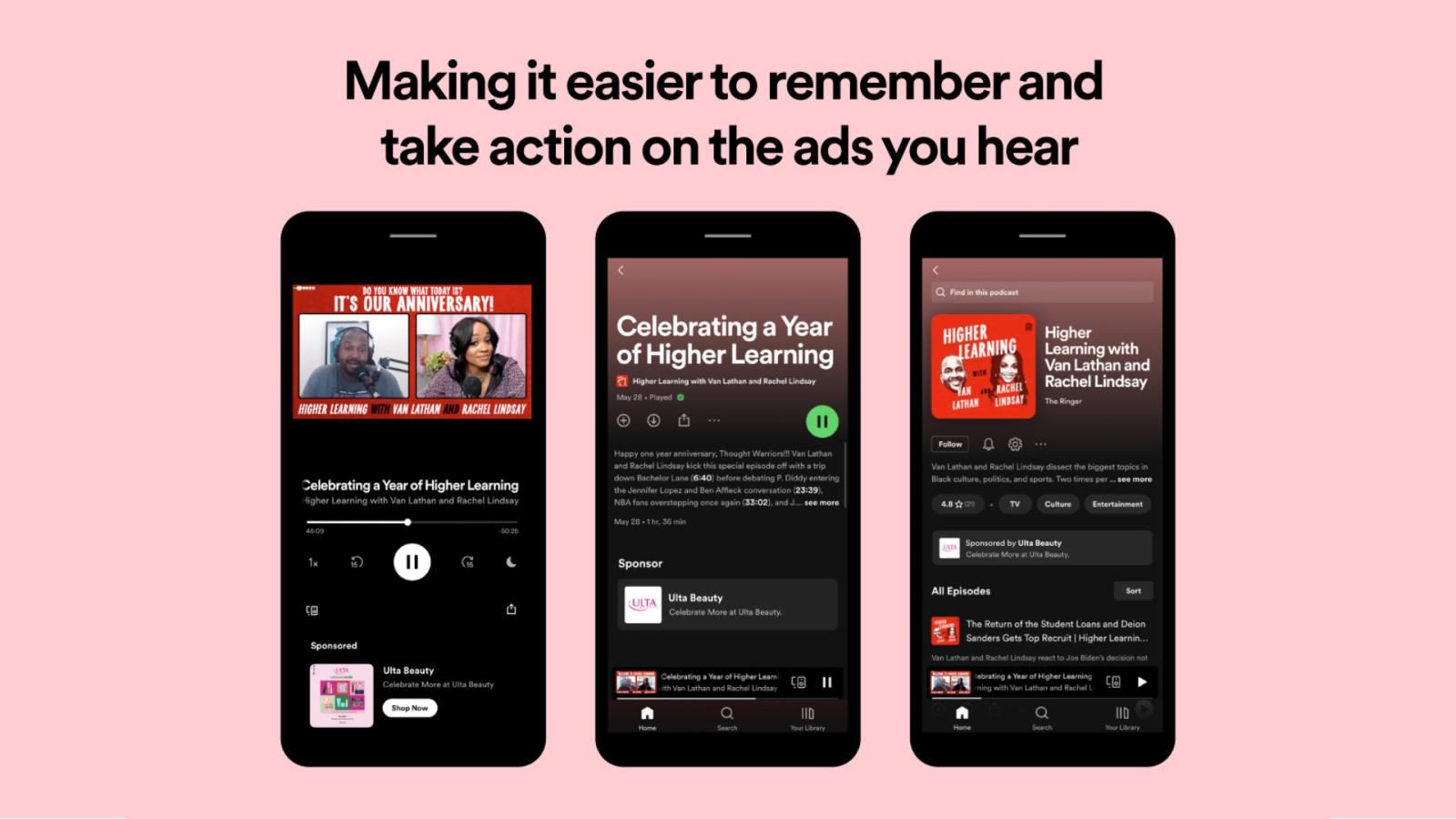Spotify has been introducing new features seemingly every month, and it recently brought back the much-requested real-time lyrics functionality. The music streaming service continues to add more podcast-related features as it aims to take on other providers. It recently added a star rating system to help users find their new favorite podcasts. Spotify introduced a new feature today, and it’s now rolling out the new “call-to-action cards”, also known as banner ads, to help listeners see the mentioned products.
Spotifywants to make podcasts more interactive, help advertisers reach new customers, and help podcast listeners find products that they hear and might like while listening to episodes. Spotify says that listeners are often forced to remember promo codes and URL addresses, and the new banner ads will make remembering and looking up this information more seamless and easier.
“But what happens when you hear an ad letting you know about Ulta’s “Hello Holidays” sale or an offer from Athletic Greens giving you 25% off when you sign up for a monthly subscription? You’re often forced to remember a promo code or URL, or make a mental note to look up the offer when you return to your phone or laptop. This process is far from seamless. That’s why we’re excited to announce a new ad experience launching across podcasts called call-to-action (CTA) cards.”
Additionally, the cards will only appear on Podcast pages and the playback screen on the bottom of the app.
“CTA cards will appear in the app as soon as a podcast ad begins playing, and will resurface later on while you’re exploring the Spotify app—making it easier to check out the brand, product, or service you heard about while listening. CTA cards will make it easier for you to directly discover the products and services you’re interested in without having a hard-to-remember promo code or vanity URL.”
The new banner ads, or so-called, CTA cards, are now available across select Spotify Original and Exclusive podcasts in the US. The company recorded twice as many site visits with these advertisements during testing compared to non-clickable promotions.

